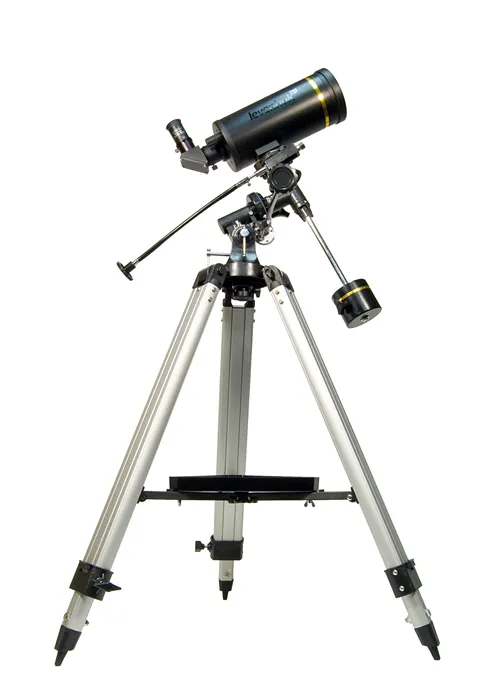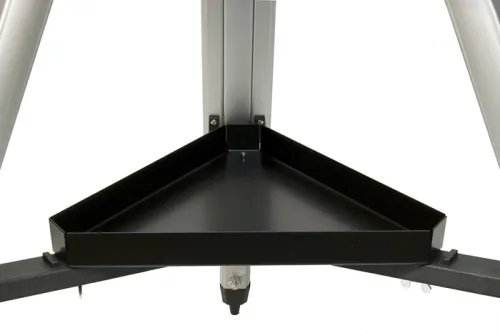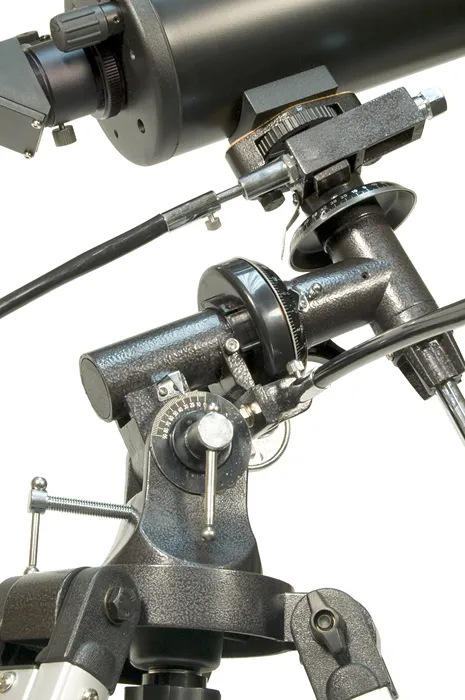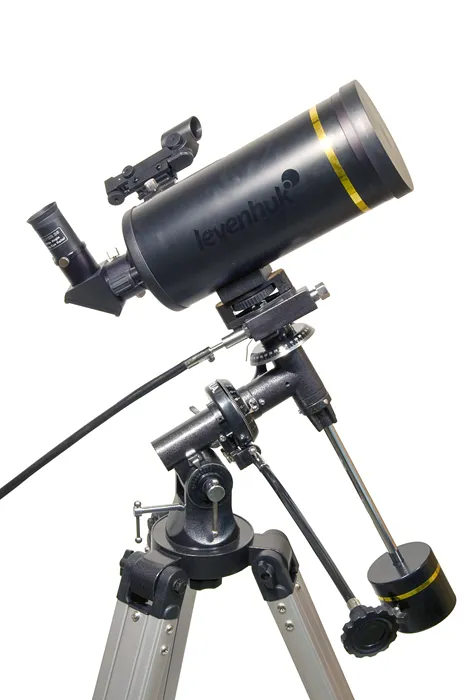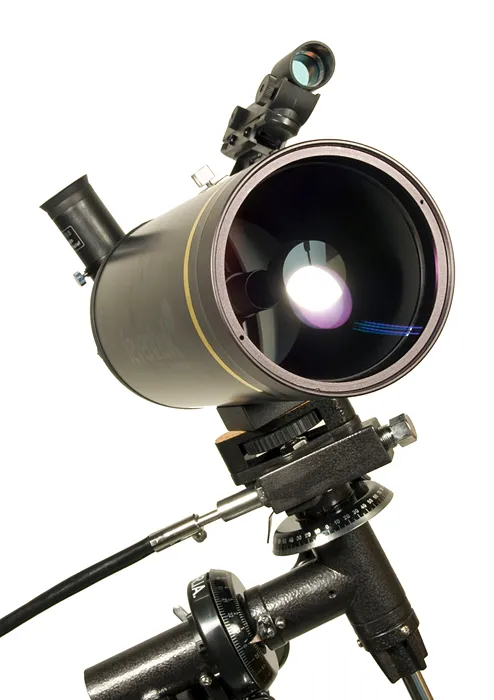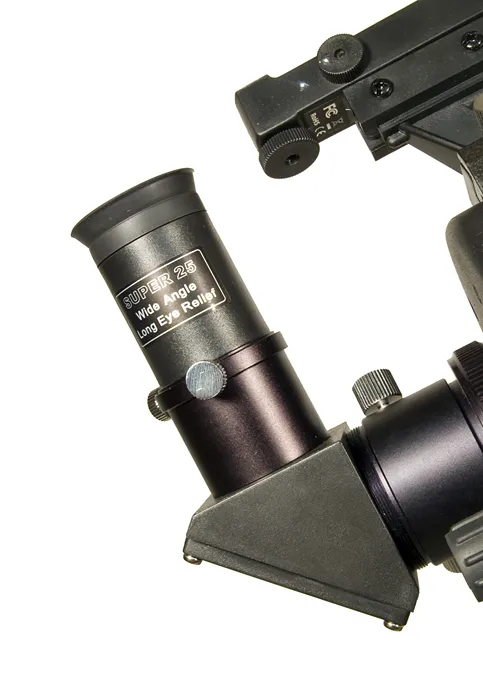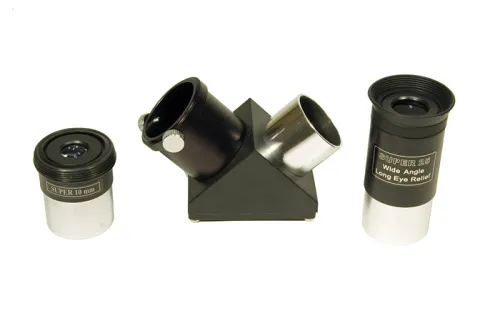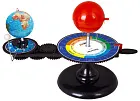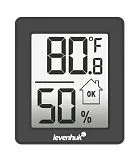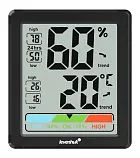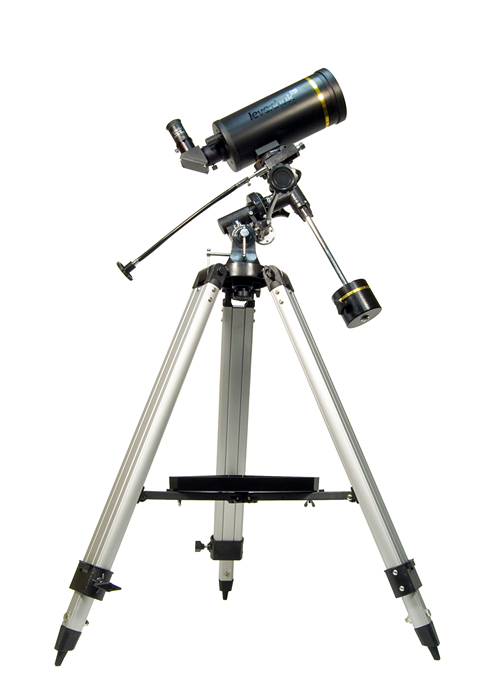Levenhuk Skyline PRO 105 MAK Telescope
Maksutov-Cassegrain telescope. Objective lens diameter: 102mm. Focal length: 1300mm
| Product ID | 27647 |
| Brand | Levenhuk, Inc., USA |
| Warranty | lifetime |
| EAN | 5905555002156 |
| Package size (LxWxH) | 39.8x17.7x10.6 in |
| Shipping Weight | 30.4 lb |
Levenhuk Skyline PRO 105 MAK is a catadioptric telescope of Maksutov-Cassegrain design that delivers high-quality views while remaining compact and lightweight. The 102-millimeter (4-inch) aperture gathers 28% more light than a 90-millimeter (3.5-inch) counterpart, and the telescope's long focal length – 1300 millimeters (51 inches) – allows for high magnifications that deliver sharp images during observations and astrophotography. This telescope may also be used for observations of deep-sky objects, like planetary nebulae and star clusters. With the help of an erecting prism (purchased separately), you can turn your telescope into a powerful spotting scope for terrestrial observations. It can even be used as a long-focus lens for SLR cameras, and is adaptable to regular tripods.
The lenses and mirrors are fully multi-coated, which allows for maximum light-gathering and increases their service life. The sturdy and lightweight aluminum tube is set up on an equatorial mount with slow-motion controls. You can also install the equatorial computerized drive system (purchased separately) on your mount. This mount is equipped with setting circles which – after a quick adjustment – allow for locating objects by their celestial coordinates and tracking them with just a turn of an equatorial control. The adjustable height tripod has a practical accessory tray where you can store all your tools. The Red Dot finder scope allows you to quickly navigate to the desired location. The kit includes 10-millimeter (0.4-inch) and 25-millimeter (0.98-inch) eyepieces with 52-degree field of view of 130x and 52x magnification, respectively. The lenses are made of glass and are fully multi-coated. Focusing your telescope is as easy as adjusting the primary mirror with a move of the smooth-turning knob. The rack-and-pinion focuser is made of stainless steel and accepts 31.75-millimeter (1.25-inch) eyepieces; so you can use eyepieces purchased separately – not just those supplied with the kit – therefore increasing the magnification to the highest practical power of 200x. The focuser has the standard T-thread, which allows you to attach an SLR camera using an adapter and use your telescope for astrophotography.
Levenhuk Skyline PRO series was designed for advanced and demanding astronomers and includes a range of different models. The one thing in common is maximum precision and reliability during observations and astrophotography, high-quality materials and optics.
The kit includes:
- Telescope optical tube (optical elements inside)
- Red Dot finder scope
- Diagonal mirror
- 10mm eyepiece, 1.25"
- 25mm eyepiece, 1.25"
- Equatorial mount
- Tripod
- User manual and lifetime warranty
| Product ID | 27647 |
| Brand | Levenhuk, Inc., USA |
| Warranty | lifetime |
| EAN | 5905555002156 |
| Package size (LxWxH) | 39.8x17.7x10.6 in |
| Shipping Weight | 30.4 lb |
| Optical design | catadioptric |
| Optical scheme | Maksutov-Cassegrain |
| Optics material | optical glass |
| Optics coating | standard |
| Primary mirror diameter (aperture), in | 4 |
| Focal length, in | 51.2 |
| Highest practical power, x | 204 |
| Aperture ratio | f/12.8 |
| Limiting stellar magnitude | 12 |
| Eyepieces | SUPER 10mm (130x), SUPER 25mm (65x) |
| Eyepiece barrel diameter, in | 1.25 |
| Finderscope | red dot |
| Focuser | 1.25" |
| Tripod | aluminum |
| Tripod height (adjustable), in | 27.56–49.21 |
| Accessory tray | ✓ |
| Telescope control | manual |
| Mount | equatorial, EQ1 |
| Power supply | CR2032 type battery – 1 pc. (not included) |
| User level | experienced users |
| Assembly and installation difficulty level | complicated |
| Observed object | deep-sky objects, planets of the Solar System |
Models overview and comparison
Convenient diagrams that describe how to install additional accessories on refractors and catadioptric telescopes
Quick overview of all Levenhuk Skyline and Skyline PRO telescopes: telescopes' comparison and recommended use
Find out how to assemble a telescope on an example of the Levenhuk Skyline 90x900 EQ telescope
This short guide will help you avoid typical mistakes and learn more about telescope and mounting types
The basics of astronomical observations for beginners
In this article we have gathered answers to some of the most frequently asked questions about telescopes
The most interesting celestial objects you can observe with Levenhuk telescopes
How telescopes work?
You can actually perform observations from your balcony!
All about telescope sizes, types, magnification, and mounts
Learn how to set up and use the telescope properly
Astronomy in light-polluted skies. Find out what you can observe in the city
Read an interesting comprehensive article on telescopes for little astronomers
The pictures are made with Levenhuk telescopes
Celestial objects you can observe with telescopes of different apertures
Colored and vivid images of galaxies, planets and star clusters entrance everyone who is fascinated by boundless space
Find an interesting review on the history of the changes to a refracting telescope
To make the process of choosing a telescope easier, we will tell you about the characteristics of the most popular types of telescopes today
Learn everything you need to know about refractor telescopes to make the right choice
And one more question... In the article I noticed one curious thing... refractors that are gathered together with reflector and catadioptric telescopes in sections always have smaller aperture than other telescope types. As I figured it must mean that reflectors and catadioptric telescopes lose in comparison with refractors... Is it a fair conclusion?
Thank you in advance!!!
Yes, catadioptric telescopes gather less light than telescopes of other types with the same aperture (about 65-75% while refractors gather 90%). Advantages of catadioptric telescopes: large focal length; despite their size - convenient for maximum magnifications (planetary observations); almost no color and geometric distortion.
Thanks for the query.
In this case, to calculate the highest mm. of an eyepiece, we need to divide the telescope's focal length by the highest practical power which makes it 6.37mm.
I doubt that an eyepiece with exactly the same focal length exists so you need to choose one of the closest, for example, Levenhuk Plössl 6.3 mm Eyepiece.
I'd recommend to check out a "See it all!" Astronomer's Handbook which includes information on 280 celestial objects. You may find it here at http://www.levenhuk.com/catalogue/other/books-charts-and-posters/see-it-all-astronomers-handbook/

